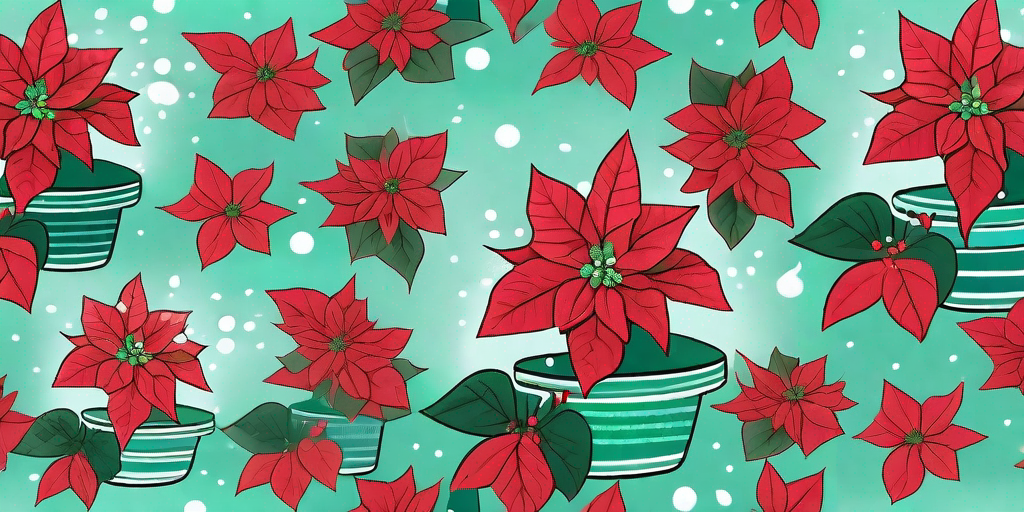
Ah, the poinsettia! That radiant burst of red and green that brings a festive cheer to any room. But have you ever considered growing your own? It's not as daunting as it sounds. In fact, with a little patience, a dash of love, and a sprinkling of Christmas magic, you can cultivate your very own poinsettia plant from seed. Let's unwrap the secrets to poinsettia seed success, shall we?
Understanding the Poinsettia Plant
Before we dive into the nitty-gritty of poinsettia propagation, it's important to understand the plant itself. The poinsettia (Euphorbia pulcherrima) is native to Mexico and Central America, where it blooms during the winter months. Its vibrant red 'flowers' are actually modified leaves called bracts, while the true flowers are the tiny yellow structures found in the center of the bracts.
Despite their tropical origins, poinsettias have become synonymous with the Christmas season in many parts of the world. They're not just for show, either. Poinsettias have a rich history and cultural significance, and are even featured in Mexican Christmas celebrations as part of the 'Noche Buena' flower display.
The Poinsettia's Life Cycle
Understanding the poinsettia's life cycle is key to successful cultivation. The plant has a long growing season and requires specific conditions to trigger its characteristic red bracts. After blooming, the plant enters a period of dormancy before the growth cycle begins anew.
By mimicking these natural cycles at home, you can encourage your poinsettia to bloom year after year. It's a bit like playing Mother Nature, but without the weather-controlling superpowers. (If you do have weather-controlling superpowers, please disregard this advice and carry on as you were.)
Planting Poinsettia Seeds
Now that we've covered the basics, let's get our hands dirty. Planting poinsettia seeds is a bit of a process, but don't let that deter you. Remember, good things come to those who wait (and water, and fertilize, and prune...).
First, you'll need to source your seeds. Poinsettia seeds can be purchased online or harvested from an existing plant. If you're going the DIY route, wait until the flowers have faded and the seed pods have dried out before collecting the seeds.
Step-by-Step Guide to Planting
-
Fill a seed tray or pots with a good quality, well-draining compost.
-
Sow the seeds on the surface of the compost, spacing them out evenly.
-
Cover the seeds lightly with a layer of compost or vermiculite.
-
Water the seeds gently using a fine spray. The compost should be damp, but not waterlogged.
-
Place the tray in a warm, bright location, but out of direct sunlight. A temperature of 20-25°C (68-77°F) is ideal.
-
Keep the compost moist and watch for signs of germination, which should occur within 1-2 weeks.
Caring for Your Poinsettia Plant
Once your poinsettia seeds have sprouted, the real fun begins. Young plants require regular watering, feeding, and pruning to encourage bushy growth. They also need a specific light-dark cycle to trigger bract coloration.
It's a bit like raising a child, really. Except instead of teaching it to ride a bike, you're teaching it to produce vibrant red bracts. And instead of sending it off to college, you're... well, you get the idea.
Watering and Feeding
Poinsettias prefer a moderately moist soil. Water your plant when the top inch of soil feels dry to the touch, but avoid overwatering as this can lead to root rot. A balanced, water-soluble fertilizer applied every 2-4 weeks will keep your poinsettia happy and healthy.
Remember, poinsettias are tropical plants, so they appreciate a bit of humidity. A regular misting or a pebble tray can help maintain humidity levels, especially during the dry winter months.
Light and Temperature
Poinsettias need plenty of light to grow, but they're a bit picky when it comes to temperature. They prefer a consistent temperature of 16-21°C (60-70°F) during the day and slightly cooler at night. Avoid placing your plant near drafts, heat vents, or cold windows, as sudden temperature changes can cause leaf drop.
To trigger bract coloration, poinsettias require a specific light-dark cycle. Starting in October, give your plant 14 hours of uninterrupted darkness followed by 10 hours of bright, indirect light each day. This mimics the natural light conditions in the poinsettia's native habitat and encourages the plant to produce its characteristic red bracts.
Frequently Asked Questions
Why isn't my poinsettia turning red?
If your poinsettia isn't turning red, it may not be getting the right light-dark cycle. Remember, poinsettias need 14 hours of darkness and 10 hours of light each day to trigger bract coloration. Try moving your plant to a darker location or covering it with a box during the dark period.
Can I grow a poinsettia from a cutting?
Yes, poinsettias can also be propagated from cuttings. This is a faster method than growing from seed, but it requires a mature plant to start with. Cuttings should be taken in summer, treated with rooting hormone, and planted in a well-draining medium.
Are poinsettias poisonous?
Despite a common myth, poinsettias are not deadly poisonous. However, they can cause mild irritation if ingested or if the sap comes into contact with the skin. It's best to keep poinsettias out of reach of curious pets and children.
Conclusion
And there you have it, folks! The secret to poinsettia seed success. With a bit of patience and care, you can grow your own Christmas cheer right at home. So why not give it a try? After all, nothing says 'Merry Christmas' quite like a home-grown poinsettia.
Happy planting, and may your holidays be filled with joy, laughter, and plenty of vibrant red bracts!















